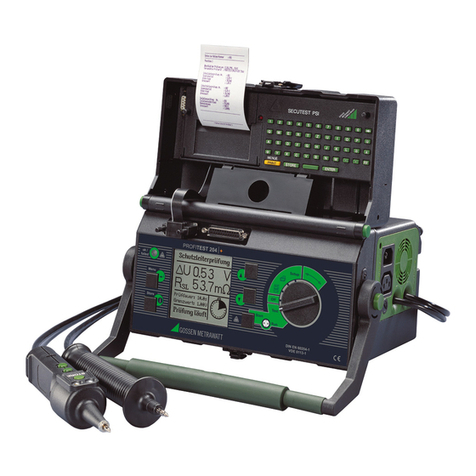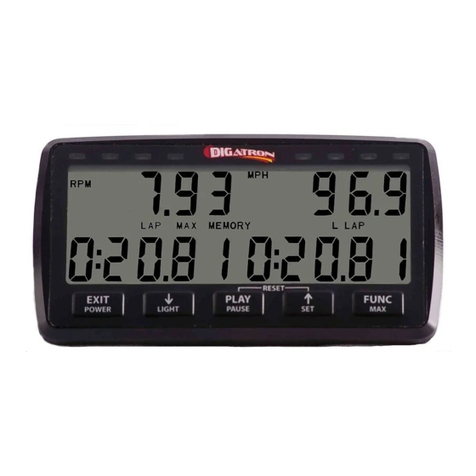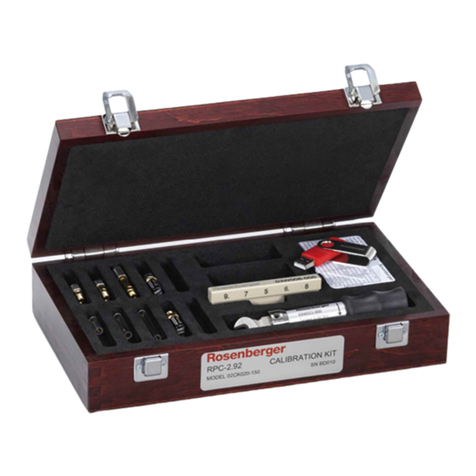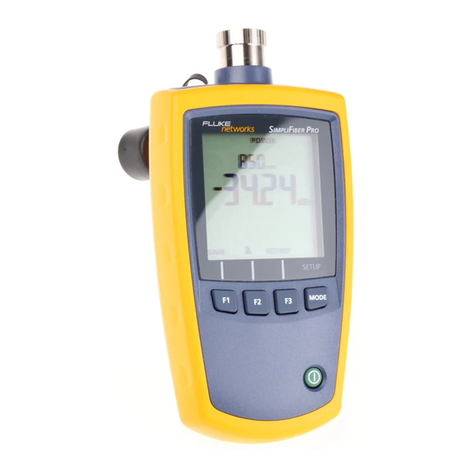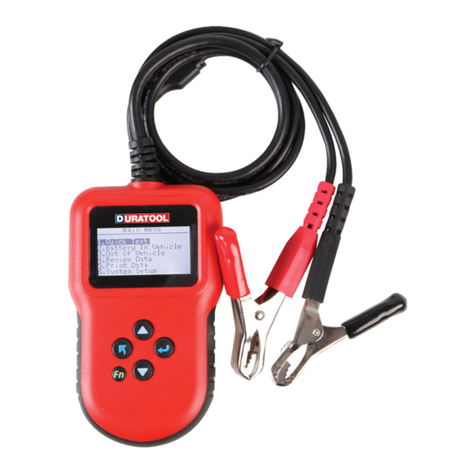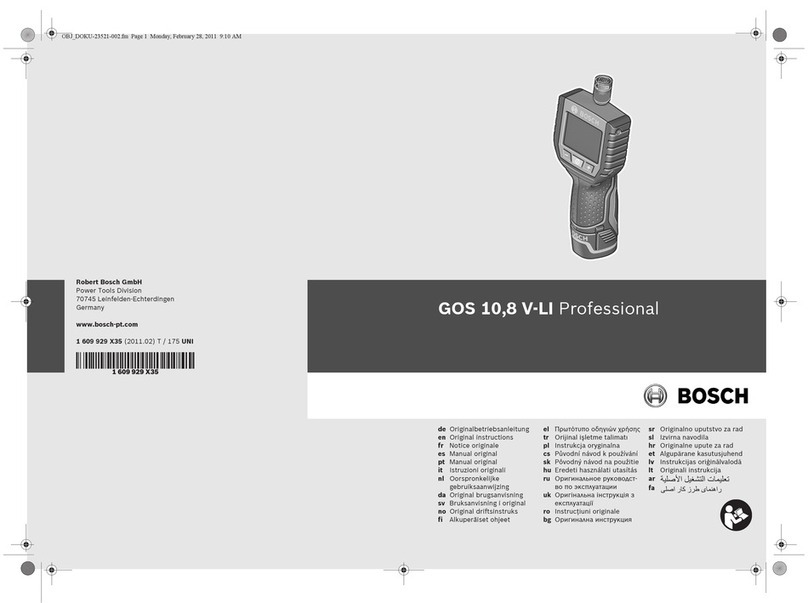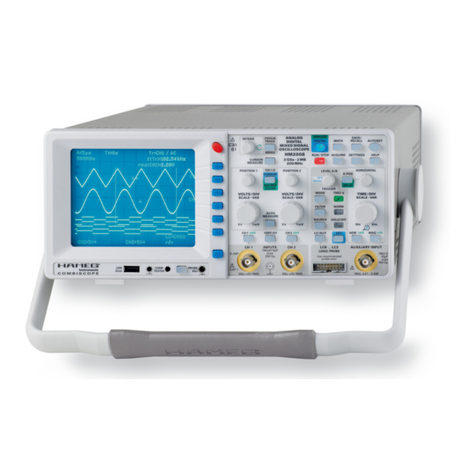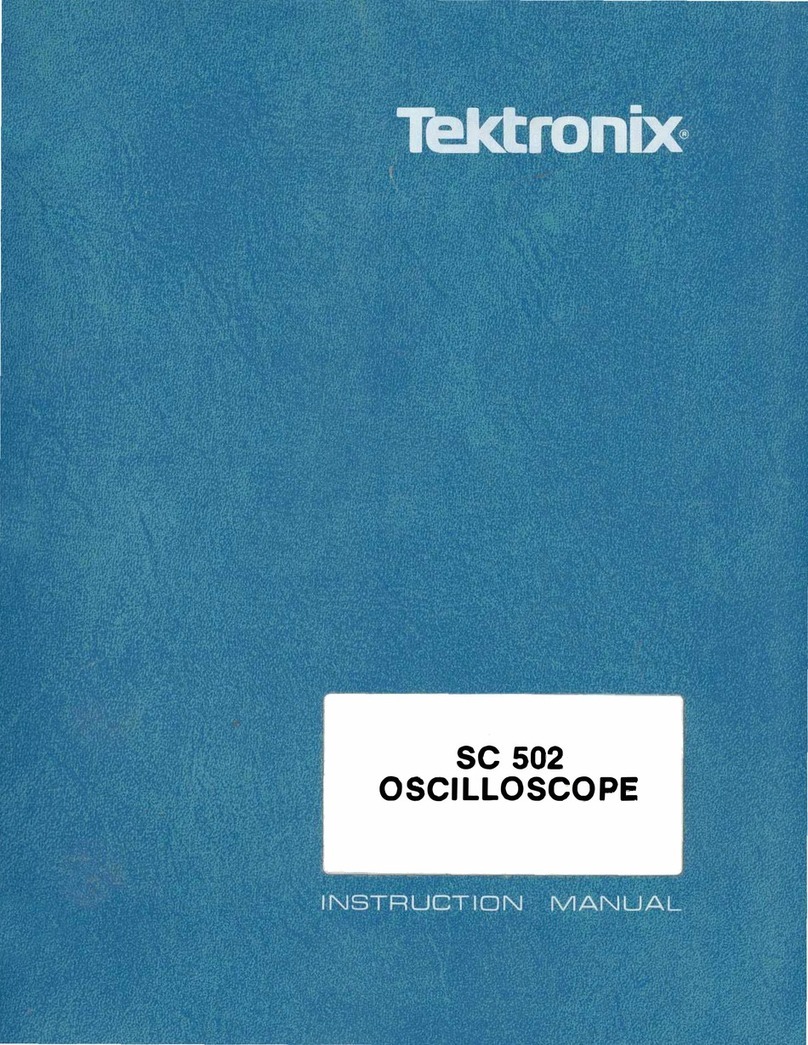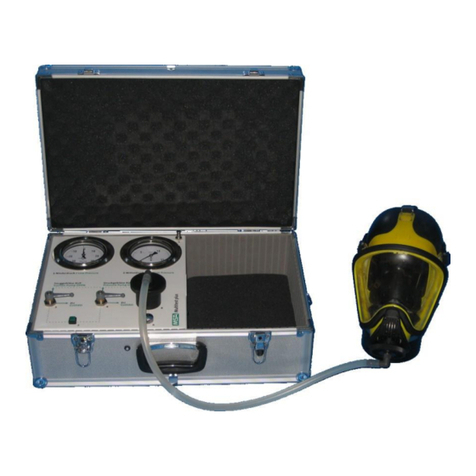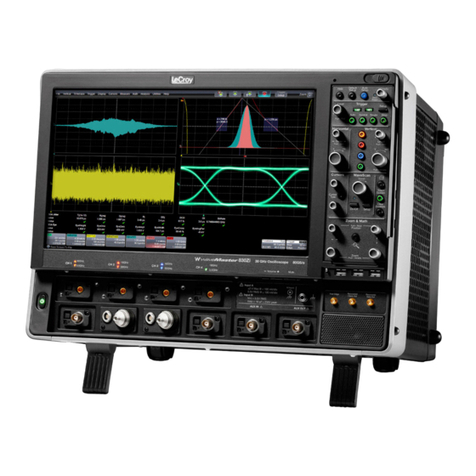Vitl Lu-Mini User manual

Instructions for Use

Instructions for Use
2
This Manual Copyright © 2018 ITL
All rights reserved. No part of this manual may be reproduced, stored in a
retrieval system, or transmitted, by any means or in any form, without the
prior permission of Integrated Technologies Limited (ITL).
The information contained in this manual is subject to change without notice.
ITL assumes no responsibility for any errors that may appear in this or
related documentation.
Document: V501007
Revision: 3-1810
Vitl is the brand name for Integrated Technologies’ own range of laboratory
products. For further information, please visit the Vitl web site:
www.vitlproducts.com
All sales and technical enquiries should be addressed to:
UK
Vitl Customer Services
Integrated Technologies Limited
Viking House, Ellingham Way, Ashford, Kent, TN23 6NF
United Kingdom
+44 (0)1233 638383
USA
ITL Virginia Inc.
305 Ashcake Road, Suite L, Ashland, Virginia 23005
USA
+1 804-381-0905
CHINA
Integrated Electronic Systems (Shanghai) Co Ltd
T3-11 Unit 201, No. 5001 Hua Dong Road, Pudong,
Shanghai 201201, China
+86 (0)21 585 854 63

Instructions for Use
3
Contents
1Symbols Used in this Instruction Manual.....................................................6
2Safety Precautions and Limitations of Use..................................................7
3Regulatory Limitations of Use ...................................................................11
4Lu-mini Unit Description............................................................................12
4.1 Acceptable Sample Vessel Types and Fill Volumes.................................15
5Lu-mini Unit Installation.............................................................................16
6Basic Unit Operation..................................................................................17
6.1 User Display and Controls.........................................................................17
6.2 Powering-up the Lu-mini Unit....................................................................20
6.3 Selecting the Active User..........................................................................22
6.4 Selecting a Protocol and Performing a Reading .......................................24
6.4.1 Selecting a Protocol ..................................................................................24
6.4.2 Editing the Sample ID................................................................................25
6.4.3 Sample Vessel Insertion and Removal .....................................................27
6.4.4 Performing a Reading ...............................................................................29
6.4.5 Results Status Tagging and Adding a Comment Note..............................31
6.5 Viewing the Test Results Database ..........................................................33
6.5.1 Deleting Test Results from the Lu-mini Database.....................................34
6.6 Using the Timer Function..........................................................................35
6.6.1 Using an Independent Timer.....................................................................36
6.6.2 Using Linked Cascading Timers................................................................38
6.6.2.1 Linking Timers into a Single Cascading Group.......................................38
6.6.2.2 Linking Timers into Multiple Cascading Groups......................................40
6.6.3 Using the Timers whilst Sample Testing...................................................40
6.7 Unit Set-up Options...................................................................................41
6.7.1 Setting the Clock and Date/Time Formats ................................................43
6.7.2 Beeper and Button Click Volume ..............................................................43
6.7.3 Remembering the Last Active User ID......................................................44
6.7.4 Define Automatic Sample ID Text Format.................................................44
6.7.5 Reader Test Mode.....................................................................................45
6.8 Standby Mode and Unit Shutdown Procedure..........................................46
7Lu-mini Windows App and Advanced Unit Configuration..........................48
7.1 Installing the Lu-mini Windows App and USB Driver................................48
7.2 Lu-mini App Basic Functionality................................................................50
7.2.1 Page Selection Buttons.............................................................................51
7.2.2 Toolbar Options.........................................................................................52
7.2.3 Help Menu Options....................................................................................52
7.2.4 Data Table Field Editing and Context Menu..............................................53
7.3 Data Synchronisation................................................................................56
7.4 Test Results Database Page.....................................................................57
7.4.1 Uploading Results Data.............................................................................58
7.4.2 Exporting Test Results Data......................................................................58
7.4.3 Deleting Results Data................................................................................59
7.5 User IDs Page...........................................................................................59
7.6 Global Unit Settings Page.........................................................................60

Instructions for Use
4
7.6.1 Adding a New Unit ....................................................................................61
7.7 Sample Measurement Protocols Page......................................................61
7.7.1 Protocol Name and Reagent Assay..........................................................63
7.7.2 Sample Method Types..............................................................................63
7.7.2.1 Single Tube Measurements....................................................................64
7.7.2.2 Multiple Tube Measurements..................................................................64
7.7.2.3 Continuing a Multi-Tube Test from the Worklist......................................66
7.7.3 Measurement Types .................................................................................67
7.7.4 Test Result Options and Banding .............................................................69
7.7.4.1 Single Sample Result Banding....................................................................71
7.7.4.2 Multiple Sample Comparison Bands............................................................72
7.8 Reagent Assays Page...............................................................................73
8Troubleshooting ........................................................................................75
9Maintenance and Servicing.......................................................................77
9.1 Routine Cleaning and Inspection..............................................................77
9.2 Decontamination Procedure......................................................................79
9.3 Transportation and Storage ......................................................................80
9.4 Product Disposal.......................................................................................80
10 Warranty and Returns...............................................................................81
11 Technical Specification .............................................................................82
12 Glossary of Terms and Abbreviations.......................................................84
WARNING
Please ensure that you have read and fully understood the Safety
Precautions and Limitations of Use in Section 2 of this manual before
attempting to install or operate this product.
Failure to do so could result in severe injury or may damage the unit and
invalidate the product warranty.

Instructions for Use
5
Tables
Table 1: Advisory Symbol Meanings..........................................................................6
Table 2: Unit Features.............................................................................................13
Table 3: Unit Accessories........................................................................................14
Table 4: Acceptable Sample Vessel Types.............................................................15
Table 5: Main Menu Button Functions.....................................................................17
Table 6: Navigation Button Functions......................................................................18
Table 7: Status and Prompt Symbols......................................................................19
Table 8: Result Status Tag Symbols .......................................................................31
Table 9: Timer Function Buttons and Status Symbols.............................................35
Table 10: User Preferences and Options ................................................................42
Table 11: Automatic Sample ID Buttons..................................................................44
Table 12: Lu-mini App Page Select Buttons............................................................51
Table 13: Lu-mini App Toolbar Options...................................................................52
Table 14: Lu-mini App Help Menu Options..............................................................52
Table 15: Data Cell Context Menu Options.............................................................55
Table 16: Test Results Database Data Fields.........................................................57
Table 17: User IDs Data Fields................................................................................59
Table 18: Unit Settings Data Fields.........................................................................60
Table 19: Time and Date Synchronisation Options.................................................60
Table 20: Protocols Table Data Fields.....................................................................62
Table 21: Sample Method Options..........................................................................64
Table 22: Sample Measurement Types...................................................................68
Table 23: Reagent Assay Data Fields.....................................................................73
Table 24: Troubleshooting Suggestions..................................................................75
Table 25: Lu-mini Unit Error Codes.........................................................................76

Instructions for Use
6
1 Symbols Used in this Instruction Manual
The following advisory symbols are used in this manual.
Table 1: Advisory Symbol Meanings
DANGER
Indicates a Risk of Electric Shock which could, if not avoided,
result in severe injury or death.
DANGER
Indicates a Risk of Explosion which could, if not avoided,
result in severe injury or death.
WARNING
Indicates a hazardous situation which could, if not avoided,
result in severe injury or death; or severely damage the unit.
CAUTION
Indicates a hazardous situation which could, if not avoided,
result in minor or moderate injury; or degrade or impair the
functionality of the unit.
CAUTION
Indicates an Electrostatic-Sensitive Device for which care
should be taken not to touch the exposed electrical contacts
as this could degrade or impair the functionality of the unit.
CAUTION
Indicates a possible crush hazard due to moving parts which
could, if not avoided, result in minor or moderate injury.
Advisory or other useful information.
Refer to Lu-mini App advanced features.
NN
Refer to “Section NN” for more details.

Instructions for Use
7
2 Safety Precautions and Limitations of Use
It is essential that all users of this equipment have fully read and understood
the following safety precautions and limitations of use before installing or
operating the Lu-mini unit.
IMPORTANT
WARNING
The protection provided by this equipment may be impaired if
it is not used in a manner described in this manual.
WARNING
It is essential that the user of this equipment is aware of the
potential hazards associated with the unit and its accessories.
All operators should be familiar with the safety precautions
and warnings given in these instructions before attempting to
operate the unit.
Improper use of this unit or its accessories may impair their
functionality and invalidate the manufacturer’s warranty.
Unit Handling Precautions
CAUTION
Care should be taken not to drop the unit or subject it to rough
physical handling, both during normal use and during
installation, transportation and storage.
Do not use the unit if it shows any signs of damage or wear.
WARNING
The unit should be held and supported in both hands when
lifting or moving. Do not lift the unit by the lid.
Care should be taken to avoid trapping fingers under the unit
when placing it down on a solid surface.
CAUTION
Care should be taken not to knock the LCD display.
Do not use excessive force when pressing the touchscreen
buttons or when cleaning it.

Instructions for Use
8
Unit Installation and Operating Environment
DANGER
WARNING
The Lu-mini unit is designed for indoor laboratory use only.
The acceptable operating temperature range is 18ºC to 38ºC,
with a relative humidity of 20% to 85% non-condensing, at a
maximum altitude of 2000m above sea level.
If the unit is stored in conditions outside of these ranges, it
must be left to stand unpowered until it has acclimatised to
within these environmental limits before being powered.
DANGER
Use the USB power adaptor provided with the unit.
Care should be taken when powering the unit from a computer
USB port or alternative USB power source.
WARNING
Always ensure that the USB power cord is securely inserted
into the rear of the unit.
Ensure that any excess power cord does not pose a potential
trip or pull hazard.
DANGER
Do not operate the unit in any area which is, or has been, or is
thought to have been exposed to explosive or flammable
gases, vapours or liquids.
WARNING
The unit must be installed and operated on a solid, stable,
vibration-free and level working surface.
CAUTION
For best results, the unit should be installed and operated in a
stable thermal environment, out of direct sunlight and away
from sources of heat or draught.

Instructions for Use
9
General Operating Precautions
DANGER
Ensure that the power is switched off at the mains outlet
before inserting or removing the USB power cord.
If a spillage occurs in or over the unit, switch the power off and
unplug the USB cord at the power adaptor before attempting
to deal with the spill.
DANGER
The unit is intended for use with aqueous solutions only.
Never use the unit with any explosive, volatile or highly
reactive substances or chemicals.
WARNING
To avoid liquid spills and possible cross-contamination of
samples, use sealed or capped tubes of the type specified in
Section 4.1.
Always follow prescribed laboratory procedures and use
appropriate personal protective equipment (PPE - such as
gloves, clothing, goggles, etc.) when handling samples.
CAUTION
The unit lid poses a possible finger crush hazard.
Take care when opening and closing the lid to ensure hands,
fingers and protective gloves do not get trapped.
Do not insert your finger into the reader sample chamber.
CAUTION
The unit lid catch contains a small magnet. Avoid direct
contact with any magnetic-sensitive devices or assays.
CAUTION
Avoid touching the contacts of the USB port on the rear of the
unit as an Electrostatic Discharge (ESD) could degrade or
impair the functionality of the unit.

Instructions for Use
10
Unit Maintenance and Serviceability
WARNING
There are no user or operator serviceable parts inside the
unit.
Do not remove the unit casework. Removal of the unit's
casework will void the manufacturer’s warranty.
DANGER
Always disconnect the USB power cord from the unit before
performing any cleaning or decontamination procedure.
If liquid is spilt into or over the unit, switch off and disconnect
the USB from the source before attempting to deal with the
spillage.
CAUTION
The use of harsh chemicals and cleaning agents may damage
the unit and degrade its performance.
Always follow the cleaning and decontamination procedures
specified in Sections 9.1 and 9.2 of this instruction manual.

Instructions for Use
11
3 Regulatory Limitations of Use
Declaration of Conformity
Integrated Technologies Limited (ITL) affirm that this product
fulfils the essential requirements of the Low Voltage Directive
2014/35/EU and the EMC Directive 2014/30/EU, when
installed and operated in accordance with the instructions in
this manual.
Safety Standards
•EN 61010-1:2010,
•EN 61010-2-010:2003
•UL 61010-1:2001 3nd Edition (CAN C22.2 CSA 61010-1)
•MET Labs NRTL Electrical Safety –Listing No E113628
EMC Standards
•EN 61326:2013, Class A
•FCC CFR 47 Parts 15.107 and 15.109, Class A
RoHS and WEEE Directive Compliance
This product complies with the requirements of the RoHS2
Directive 2011/65/EU for Electrical and Electronic Equipment
and in accordance with BSEN 50581:2012.
Where applicable, the Lu-mini unit should be disposed of in
accordance with the European Union WEEE Directive
2002/96/EC on Waste Electrical and Electronic Equipment.
Do not dispose of this product into unsorted municipal waste
or public landfill. Please refer to Section 9.4 for details of how
to correctly dispose of this product.
The Lu-mini unit is designed and manufactured under ISO 9001 by:
Integrated Technologies Limited
Viking House, Ellingham Way, Ashford, Kent, TN23 6NF
United Kingdom

Instructions for Use
12
4 Lu-mini Unit Description
The Lu-mini unit is a benchtop Luminometer and has the following external
features:
vj
d
vj
vj
d
vj

Instructions for Use
13
Table 2: Unit Features
LCD Touchscreen User Interface
6.1
Unit Lid
6.4
Reader Sample Chamber
4.1
Sample Vessel Eject Button
6.4.3
Power Rating
11
USB Power Inlet
0
Unit Label and Serial Number
0
The unit label is located on the underside of the unit and provides the unit
serial number, voltage and power ratings:
There is also a label surrounding the USB Power Inlet at the rear of the unit
which provides the voltage and power ratings:

Instructions for Use
15
4.1 Acceptable Sample Vessel Types and Fill Volumes
The Lu-mini unit is designed to accept the following sample vessel types.
Table 4: Acceptable Sample Vessel Types
Vessel Type
Vessels Sizes
Sample Volumes
Tube
Round round-bottomed
10mm to 12mm diameter
47mm#to 75mm* tall
* Including cap
10mm | 12mm
Recommended:
500uL | 800uL
Minimum:
200uL | 300uL
Vial
Round flat-bottomed
15mm diameter
48mm#tall
15mm
Recommended: 1500uL
Minimum: 600uL
Cuvette
Square flat-bottomed
12.5mm square
48mm#tall
10mm path length
12.5mm
Recommended: 1000uL
Minimum: 500uL
The recommended tube type is the 12mm x 75mm (5mL) round-bottomed
polypropylene test tube with a screw cap. Such as:
•Universal Medical Inc - GS-6148R or GS-6148W
•Corning Life Sciences - Falcon 352003 or 352058
CAUTION
To avoid liquid spills and possible cross-contamination of
samples, use sealed or capped tubes whenever possible.
#Note: Refer to Section 6.4.3 for specific details on how to insert and remove
the sample vessels from the Reader Sample Chamber –particularly for
sample vessels with a height of less than 50mm.

Instructions for Use
16
5 Lu-mini Unit Installation
Before installing the Lu-mini unit, please check that the delivery is complete
(see Table 3) and that the unit and all accessory parts are intact and free
from any signs of transportation damage. Also ensure that all external and
internal packaging has been removed from the unit before installation.
Please retain all packaging for future transportation and storage of
the unit and its accessories.
The Lu-mini unit should be installed in a location which meets the following
requirements:
•Safe and suitable operating environment (see Section 2)
•Solid, stable, vibration-free and level working surface
•At least 10cm clearance around the unit to adjacent objects and walls
•Out of direct sunlight and away from sources of heat or draught
WARNING
Please also observe and abide by the Unit Installation and
Operating Environment safety precautions and preconditions
listed in Section 2 of this manual.
When the unit is initially installed, the real-time clock will need to set to your
local time and date. Please read Section 6 first, and then refer to Section
6.7.1 for details.
NOTE
When the unit is initially powered, or if the unit has been in storage
or left unpowered for several months, the internal real-time clock
battery will need recharging.
The unit may report an E85 warning (see Section 8).
Please leave the unit powered for at least 2 hours (preferably 8
hours) to recharge the battery.
Please refer to Section 7.1 for details on installing the associated
Lu-mini Windows App.

Instructions for Use
17
6 Basic Unit Operation
WARNING
Please ensure that you have read and fully understood all of
the Safety Precautions and Limitations of Use listed in
Section 2 before attempting to operate the Lu-mini unit.
6.1 User Display and Controls
The unit’s user interface consists of a colour LCD touch screen display. The
menu structure is divided into two main sections as shown below.
Control and Status
Function and Option buttons
The above screen shows the Main Menu buttons, which provide the following
functionality.
Table 5: Main Menu Button Functions
Select active User ID (Any User / Specific User)
6.3
Select Protocol and perform Reading
6.4
View the Test Results Database
6.5
Enter Timer function
6.6
Enter unit Set-up options menu
6.7
Unit Standby and Wakeup modes
6.8

Instructions for Use
18
Below is a list of other menu and data list navigation buttons and their
functions.
Table 6: Navigation Button Functions
Accept or Cancel option
6.7
Return to Main Menu
6.1
Return to Previous menu
6.4
Edit Sample ID
6.4
Expand database result
6.5
Test result Status tag
6.4.5
Test result Comment
6.4.5
Jump to Top or Bottom of data list
6.5
Move Up and Down data list
or Increase and Decrease value
6.5
Move to Next value
6.7
Other function-specific button icons are explained in Sections 6.3 to 6.8.

Instructions for Use
19
There are also various status and prompt symbols that may appear in the
main screen area, as detailed in Table 7 below.
Table 7: Status and Prompt Symbols
Prompt: Open Lid
6.4.3
Prompt: Insert Sample vessel
6.4.3
Prompt: Use specified Tube Number
6.4.3
Status: Sample Inserted correctly
6.4.3
Prompt: Close Lid
6.4.3
Prompt: Remove Sample vessel
6.4.3
When the lid is open, the unit also periodically beeps to prompt the user to
close the lid as soon as possible.
For optimum reader performance, the lid should always be kept
closed when not inserting or removing a sample vessel.
Please refer to Section 7 for additional buttons and symbols which
relate to specific Lu-mini App features.

Instructions for Use
20
6.2 Powering-up the Lu-mini Unit
The Lu-mini unit is powered via a standard USB cable, from the supplied
AC/DC USB Power Adaptor. However, it can also be powered from a USB
port on a desktop or laptop computer, a USB battery pack or a 12V to USB
Car Charger.
AC/DC USB
Adaptor (Supplied)
Computer USB Port
or Powered Hub
USB Battery
Pack
12V to USB
Car Charger
Plug the supplied USB Cable into the Lu-mini Unit and then into the power
source, and (if necessary) switch on the power source.
The Lu-mini unit LCD will light-up and display the power-up progress screen
whilst the internal data memory is checked and the reader initialised.
Power-up Screen
→
Table of contents
Popular Test Equipment manuals by other brands

Beta
Beta 1759HD/TRUCK Instructions for use
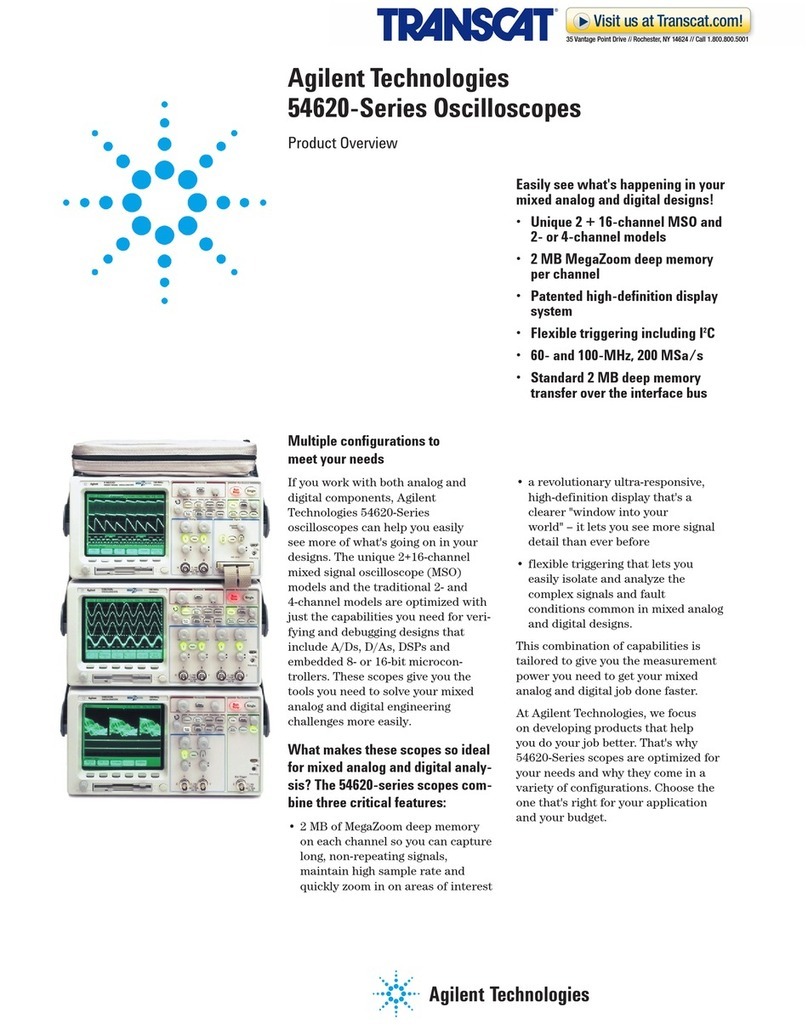
Agilent Technologies
Agilent Technologies 54620 Series Product overview
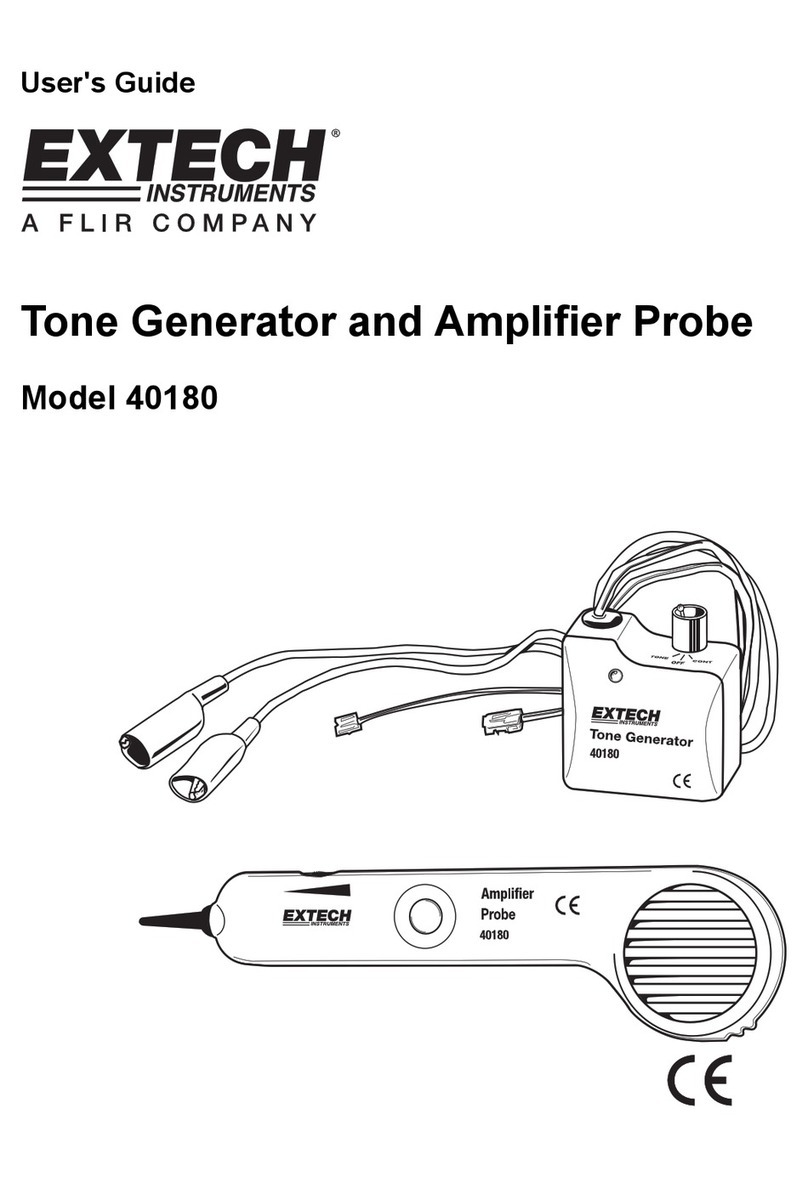
FLIR
FLIR Extech Instruments 40180 user guide
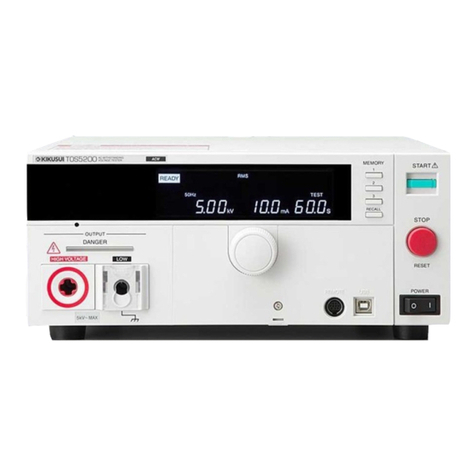
Kikusui
Kikusui TOS5200 Setup guide

C&C TECHNIC
C&C TECHNIC PG-HD1X user manual

Agilent Technologies
Agilent Technologies InfiniiVision 5000 Series Programmer's guide

